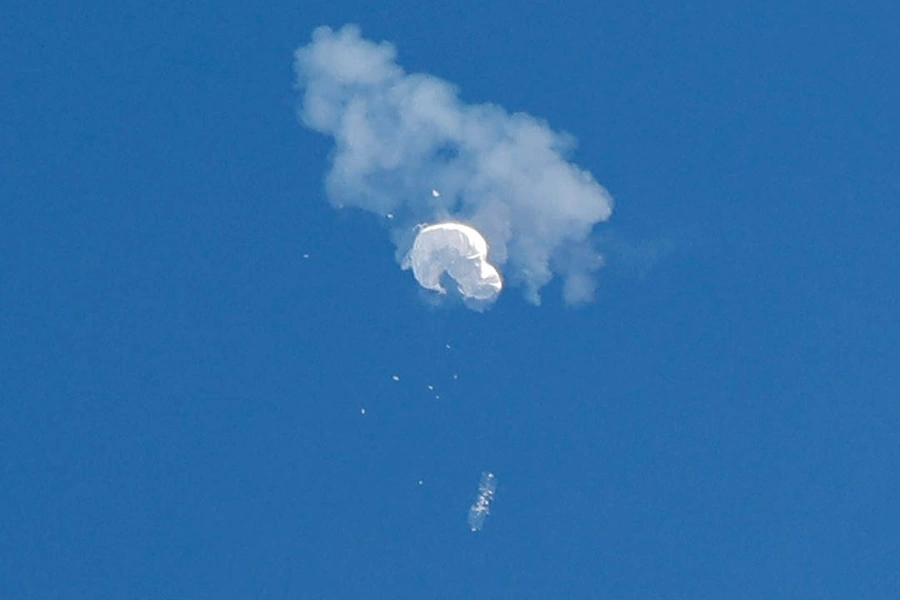David Sacks

The incident raises questions about the extent to which China has been employing these balloons – and in the process violating U.S. territorial airspace and sovereignty – and why it has been doing so when its satellites could glean this information. Far more important, however, is what this says about the ability, or more accurately inability, of Washington and Beijing to manage a future crisis.
The Biden administration’s decision to shoot down the balloon was the correct one. Unlike U.S. surveillance of China, which is conducted from international airspace and waters, this was a flagrant violation of U.S. sovereignty. It is hard to see how China, which stresses the inviolability of sovereignty more than any other country, would allow anything like this to be conducted in its airspace. China’s official explanation, that this was merely a civilian weather balloon that was blown off course and drifted over the United States, demonstrated its unwillingness to discuss the matter with any seriousness. The question of whether the balloon was able to collect any information of value is beside the point; far more important is demonstrating that these violations of sovereignty and international law will not stand.
Ultimately, this raises more fundamental questions about U.S.-China relations, revealing that neither side is prepared for a serious crisis. The potential for such a crisis, however, is growing more likely as the two clash over Taiwan, the East China Sea, South China Sea, and China’s support for Russia and North Korea. The stakes in this instance were relatively low, as China likely already had access to similar information on U.S. facilities from its constellation of low orbit satellites. From the U.S. perspective, it was more about protecting a principle than responding to a fundamentally destabilizing act. Yet this incident still dominated news coverage and led to a chorus of congressmen calling for the administration to immediately shoot the balloon down, providing the president with little decision space.
In this context, it is difficult to see how during a potential crisis over Taiwan there would be any room for steps to deescalate. Instead, it is far more likely that leaders in both Washington and Beijing would feel compelled to act quickly and take strong action to protect themselves politically.
This incident also reveals the brittleness of U.S.-China relations. While the Biden administration was right to shoot down the balloon, its decision to postpone Secretary of State Antony Blinken’s trip to Beijing was costly. This trip was an important opportunity to set guardrails to avoid or manage such incidents and warn China about its destabilizing behavior in the Taiwan Strait and its support for Russia’s war in Ukraine. At the same time, given the political climate in Washington, continuing with the trip was politically untenable. In the end, protecting political interests trumped pursuing the national interest.
This incident is unlikely to escalate further or fundamentally alter the trajectory of U.S.-China relations. It will instead fade away and the two countries will return to their sparring over more fundamental issues such as technology, Taiwan, Russia, and North Korea. But it offers an important window into the fragility of the relationship between the world’s two largest economies and the difficulty they would have in managing a real crisis as leaders in Washington and Beijing would seek to protect their political flanks.
Rather than hoping such a crisis does not materialize, Washington and Beijing will need to think creatively about how they can manage such an event against the backdrop of political pressures that will not subside. When Secretary Blinken travels to Beijing, for instance, he should press his Chinese interlocutors on the need to establish better crisis management mechanisms and the necessity of having a functioning military-to-military dialogue and crisis communications hotline.
The Biden administration should also not let this crisis go to waste. It should study its communications with China during this period with the aim of thinking through what types of gaps there would be during a tenser situation. Was it easy to reach an authoritative figure in the Chinese leadership? How long did they take to pick up the phone? Have communications channels improved since the EP-3 incident? If not, what can be done to establish a reliable channel? What does all of this say about elite politics in Xi’s China?
House Republicans, for their part, have stated their intention of investigating this incident. Such an investigation, however, should focus more broadly on the questions of how many similar flights China has conducted in recent years – during the Trump administration such balloons transited the United States at least three times, and once at the beginning of the Biden administration – and why none of those were addressed.
A real crisis is not just a theoretical proposition. With House Speaker Kevin McCarthy set on visiting Taiwan (events of the past few days might have even increased his appetite to go), a real test could be around the corner. It is thus critical for the administration to use this as a learning opportunity and attempt to address these issues with China.
No comments:
Post a Comment